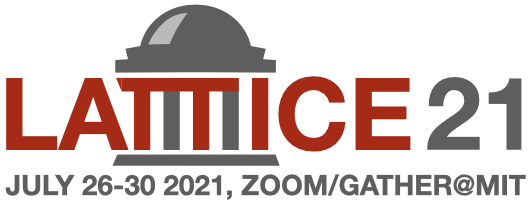Speaker
Description
Lee-Yang edge singularities have been studied in various spin models to
investigate the analytic structure of the ferromagnetic transition. As
part of the Bielefeld Parma collaboration we investigate Lee-Yang
singularities in lattice QCD. Based on an analytic continuation of the
net-baryon number density, we present results of the location of the
closest singularities in the complex chemical potential plane, obtained
with (2+1)-flavor of highly improved staggered quarks (HISQ) on lattices
with temporal extent of $N_{\tau}=4, 6$. We show that their temperature
scaling is in accordance with the expected scaling of the Lee-Yang edge
singularities in the vicinity of the Roberge-Weiss transition. The
analysis can be used to determine various non-universal parameters that
map QCD in the scaling region of the RW transition to the Ising model.
We will further discuss how the Lee-Yang edge singularity can be used to
probe also the chiral phase transition in QCD. At temperatures close to
the chiral phase transition temperature $T_c$ we find again agreement
with the expected scaling of the Lee-Yang edge singularity, now
expressed in terms of scaling variables that are appropriate for the
chiral symmetry breaking. Finally, we discuss the scaling of the
Lee-Yang edge singularity in the vicinity of a possible critical end
point in QCD, at even lower temperatures. In the future, such a scaling
analysis might hint on the existence and location of the critical end point.
